The main reason for my trip, apart from finally getting to meet lots of fellow explorers in person rather than online, was to explore the unique abandoned city of Pripyat.
As always, click on a photo to VIEW LARGE
Over the course of three days I explored a decent chunk of the highlights of what still remains three decades on. I’ve split my photos from this incredible ghost city into four separate reports as follows:
1. Avanhard Stadium, Fairground with Ferris Wheel and Bumper Cars, Palace of Culture ‘Energetik’, Polissya Hotel, and Music School.
3. Hospital No.126.
I’ve also added some additional back story and old photos of the various locations (taken from here, all rights acknowledged), to try and breathe a bit of life back into the city and illustrate what has been lost…
History – Pripyat City
(All histories abridged and rewritten from wiki, here, here, here, and here)
Named after the nearby river of the same name, Pripyat was founded on 4 February 1970. Built to serve the nearby Chernobyl Nuclear Power Plant, it was the ninth ‘nuclear city’ in the Soviet Union, and was officially proclaimed a city in 1979.

‘Pripyat 1970’ sign on the outskirts of the abandoned City.
The entire city was evacuated on the afternoon of 27 April 1986, the day after the catastrophic disaster at Reactor 4 of Chernobyl Power Plant. Residents received no warning from officials of the threat of radioactive pollution, and when the order for evacuation came were told only to take essential items, and that they would be allowed to return within 3 days.
The official evacuation note broadcast to the citizens of Pripyat, read:
“For the attention of the residents of Pripyat! The City Council informs you that due to the accident at Chernobyl Power Station in the city of Pripyat the radioactive conditions in the vicinity are deteriorating. The Communist Party, its officials and the armed forces are taking necessary steps to combat this. Nevertheless, with the view to keep people as safe and healthy as possible, the children being top priority, we need to temporarily evacuate the citizens in the nearest towns of Kiev Oblast. For these reasons, starting from April 27, 1986 2 p.m. each apartment block will be able to have a bus at its disposal, supervised by the police and the city officials. It is highly advisable to take your documents, some vital personal belongings and a certain amount of food, just in case, with you. The senior executives of public and industrial facilities of the city has decided on the list of employees needed to stay in Pripyat to maintain these facilities in a good working order. All the houses will be guarded by the police during the evacuation period. Comrades, leaving your residences temporarily please make sure you have turned off the lights, electrical equipment and water off and shut the windows. Please keep calm and orderly in the process of this short-term evacuation.”
They never returned….
Avanhard Stadium
We started our walk at the former stadium, once home to FC Stroitel Pripyat.
…and how it looks today…
Pripyat Amusement Park, Ferris Wheel and Bumper Cars
Next up was perhaps the most iconic location in the city – the famous abandoned Ferris Wheel and Dodgem Cars.
The Amusement Park was due to open on 1 May 1986 for the May Day celebrations, but the entire city was evacuated just five days beforehand. The Park was opened for a couple of hours on the morning of 27 April 1986, it is said to try and quell rumours about the explosion at the Power Plant the day before and keep residents distracted and entertained before the announcement to evacuate was given later that day.
I then moved on to the equally famous dodgems / bumper cars…
Palace of Culture ‘Energetik’
Palaces of Culture were large community centres, designed as a focal point for local residents to enjoy a range of recreational and artistic activities under one roof. The Palace of Culture in Pripyat, named ‘Energetik’ as a play on words between the ‘energetic’ of sporting activities and reference to being a power plant worker. The Palace housed a cinema, theatre, library, gymnasium, swimming pool, boxing/wrestling ring, dancing and meeting halls, and even had a shooting range in the basement.
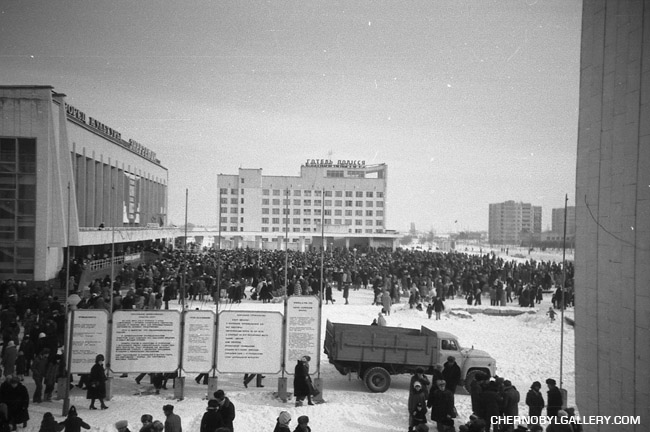
An old photo showing the Palace of Culture on the left, and Hotel Polissya in the background
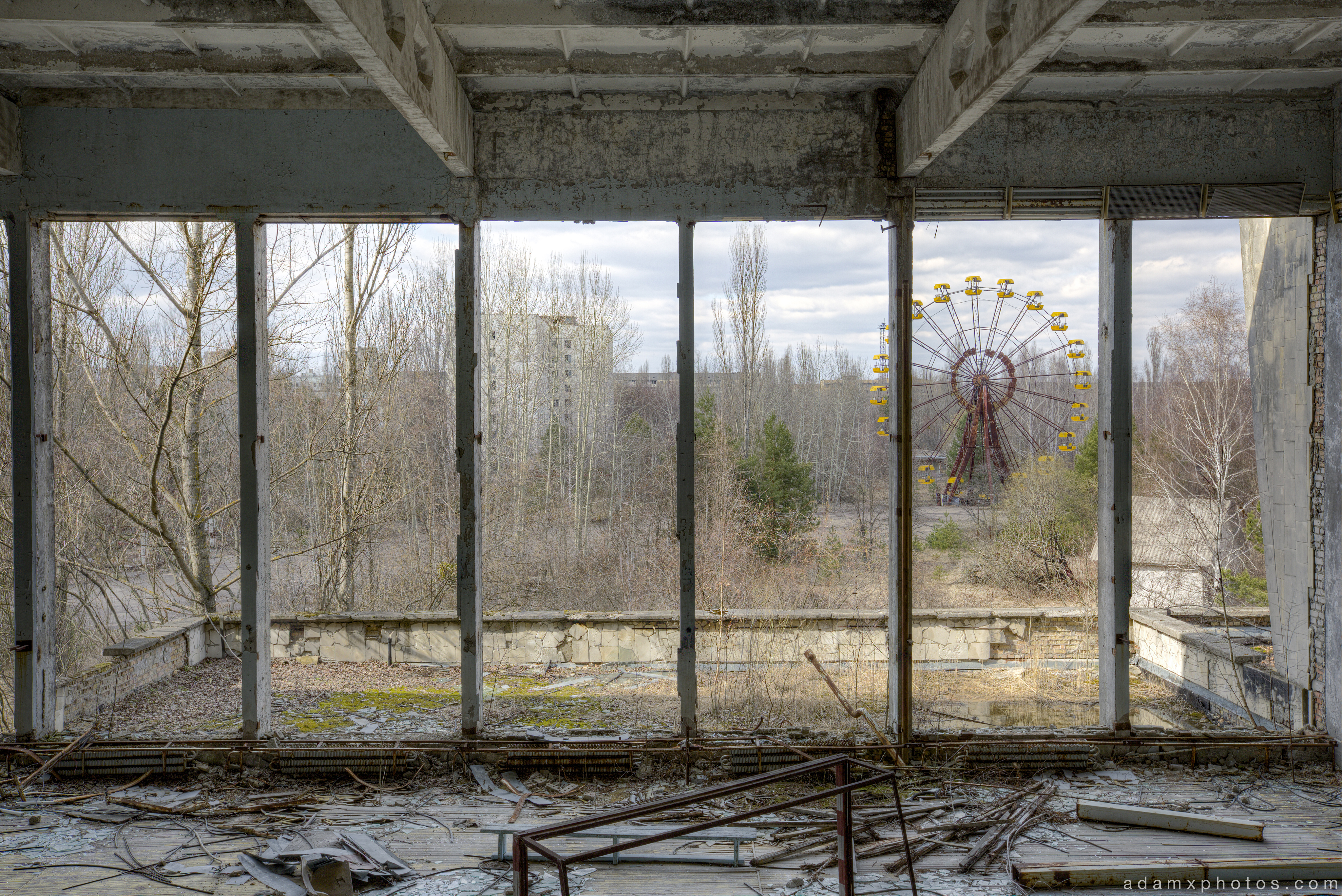
The famous ferris wheel, framed by the smashed remains of the Palace of Culture’s main sports hall.
Hotel Polissya
This hotel was built in the mid 1970s to accommodate delegations and guests visiting the Power Plants.
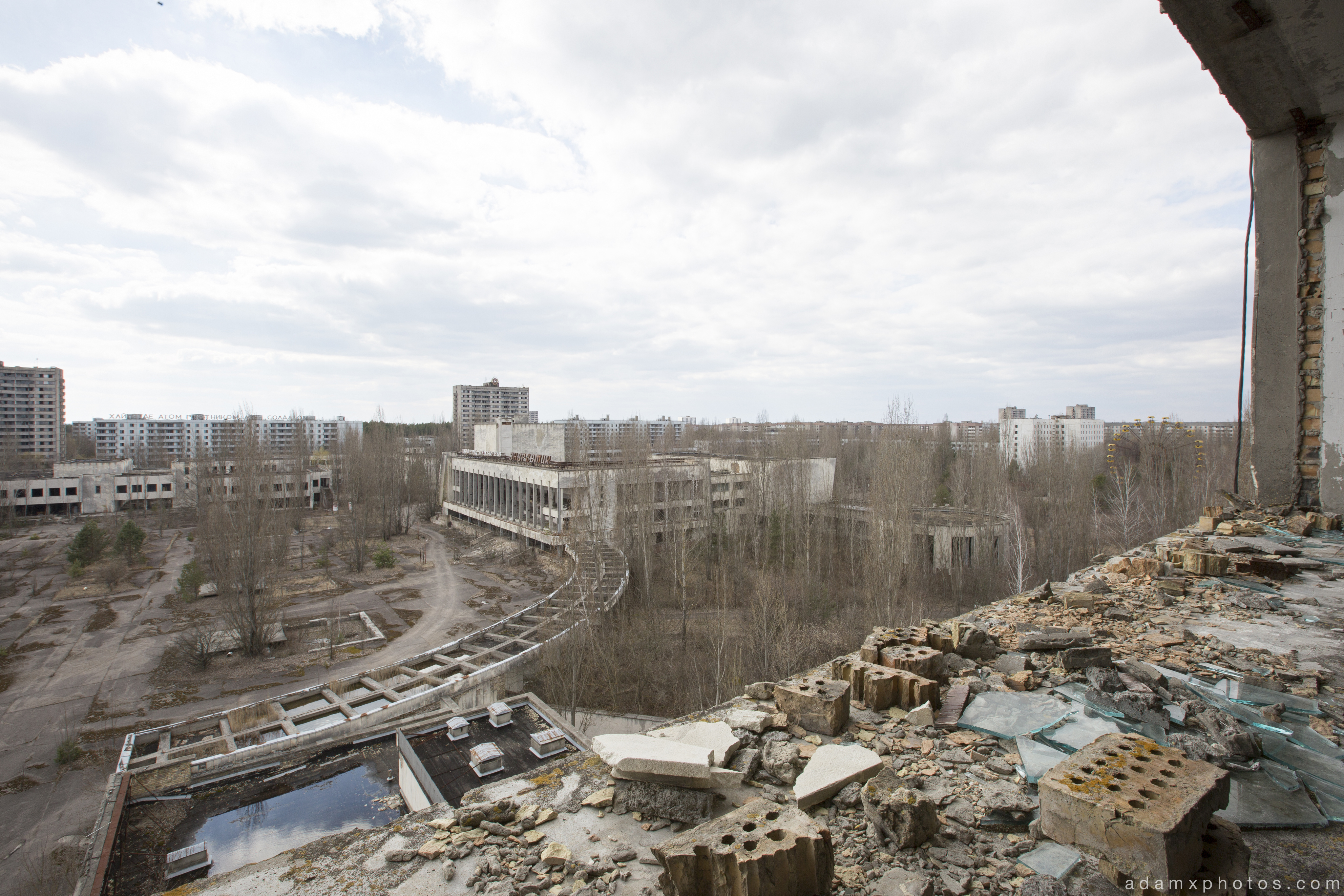
Looking back towards the Palace of Culture.
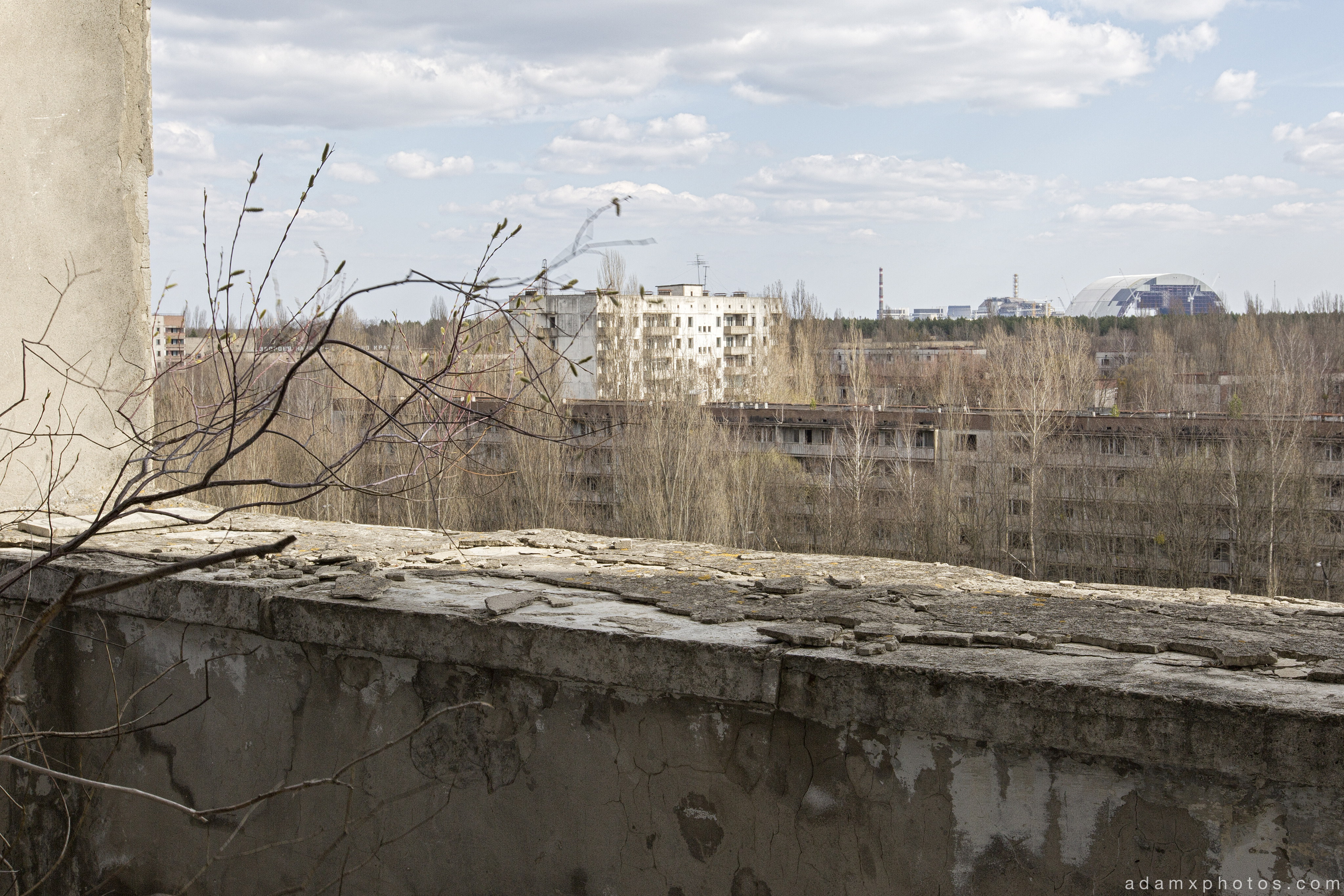
Reactor 4 and the huge ‘New Safe Confinement’ looming on the horizon…
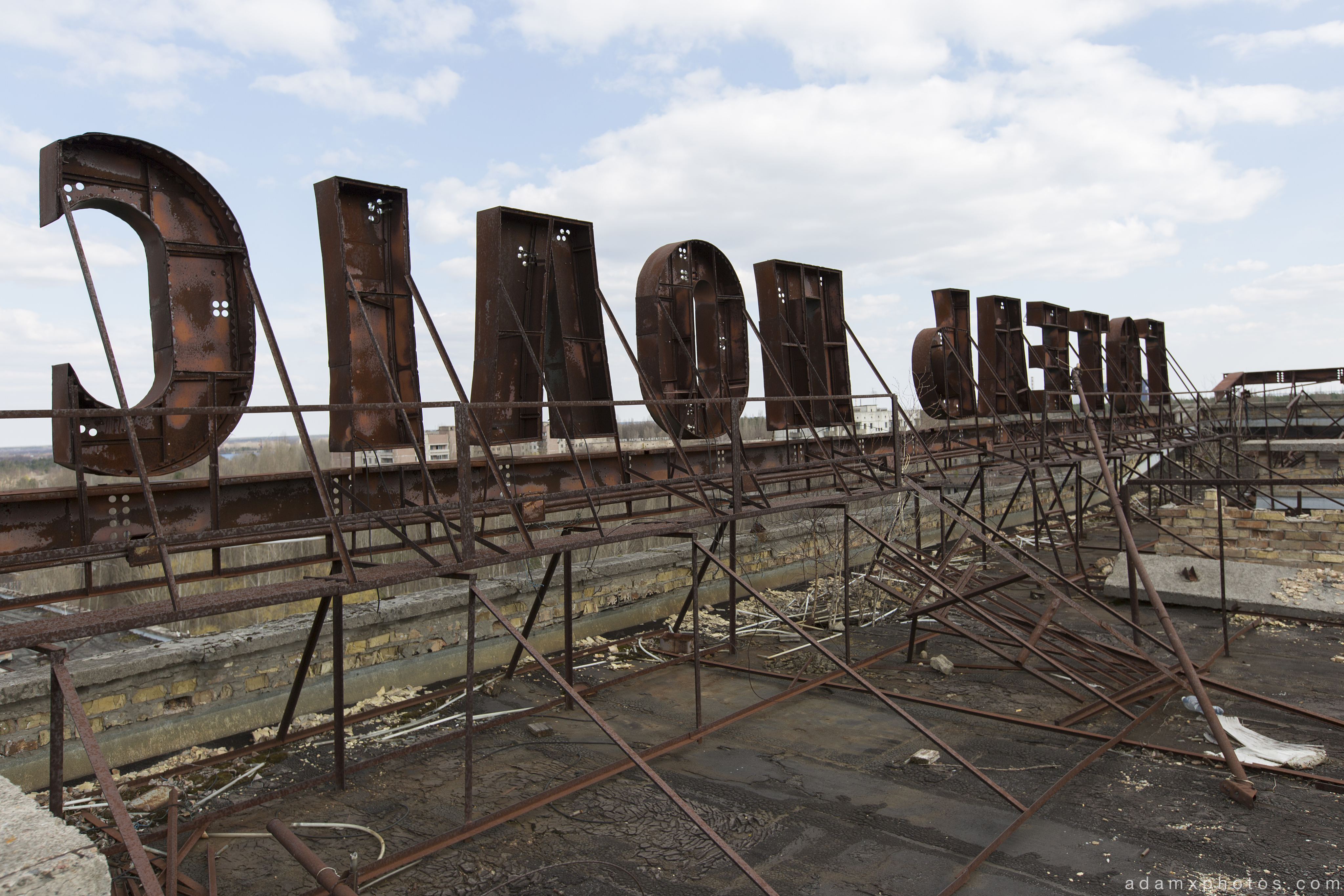
We were told that we were not allowed on the roof of the hotel, but I knew from friends who’d been before that our guides enforced this rule with a loose ‘I didn’t see you / Don’t tell me / So long as the police patrols don’t see you then it won’t be a problem’ attitude, so I sneaked away from our group at the first opportunity…
Music School
We then popped into the former music school…
Next to the Music School is…
Cinema Prometheus
We then made our way back through the overgrown and deserted streets to the main square.
Thanks for looking – more reports from Pripyat coming up!
Adam X

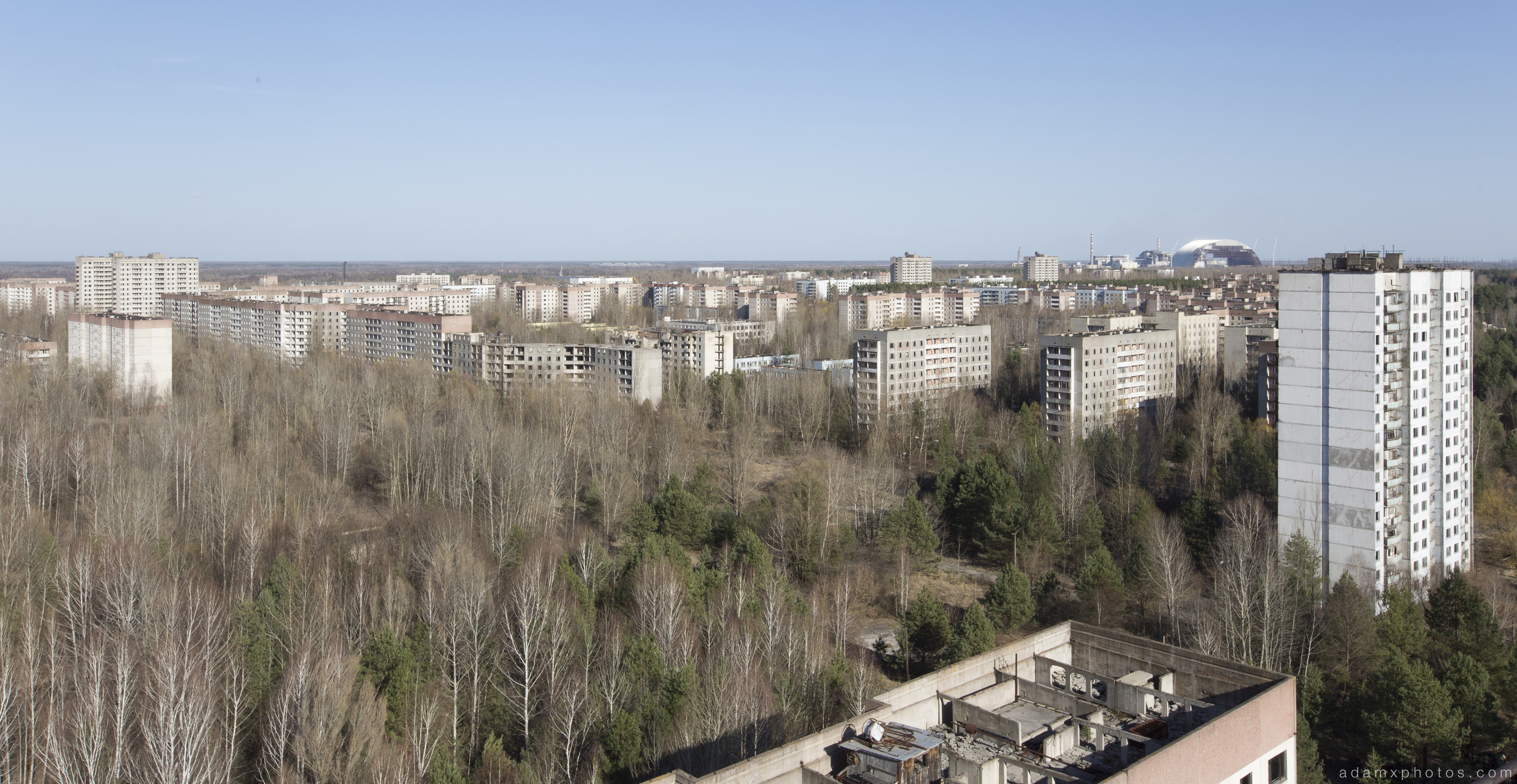
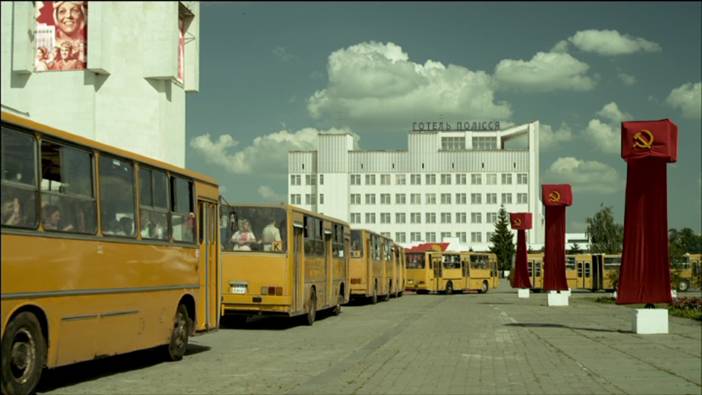
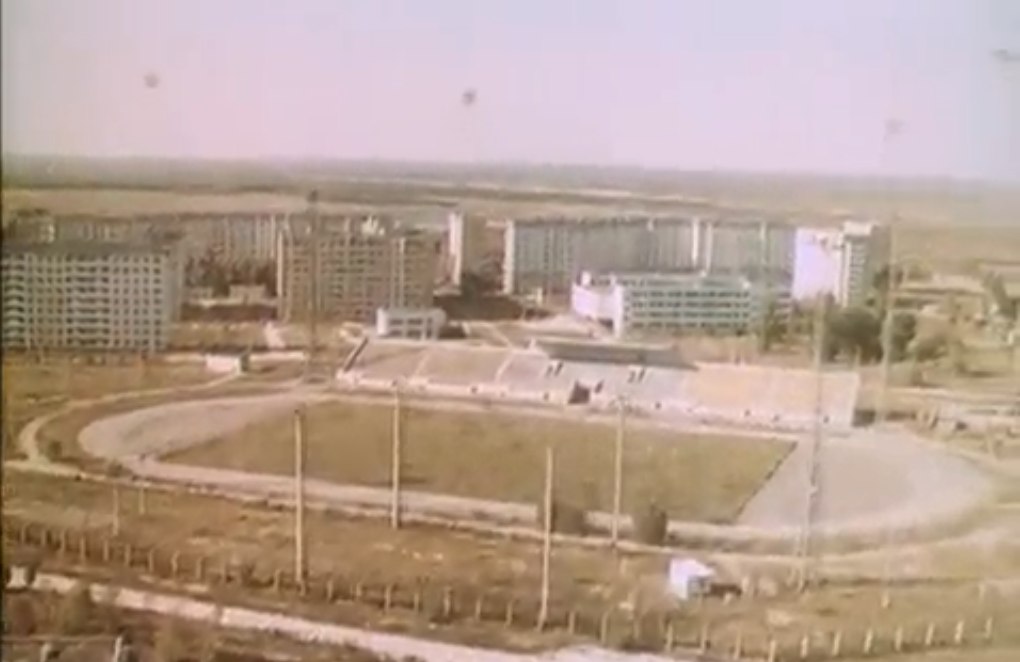





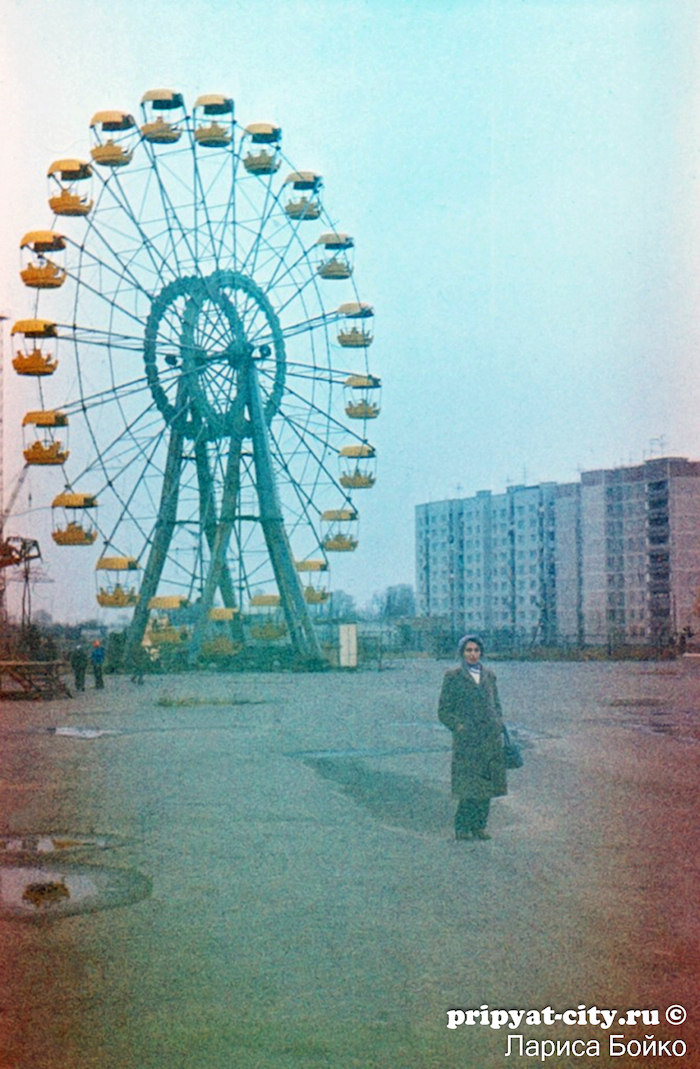
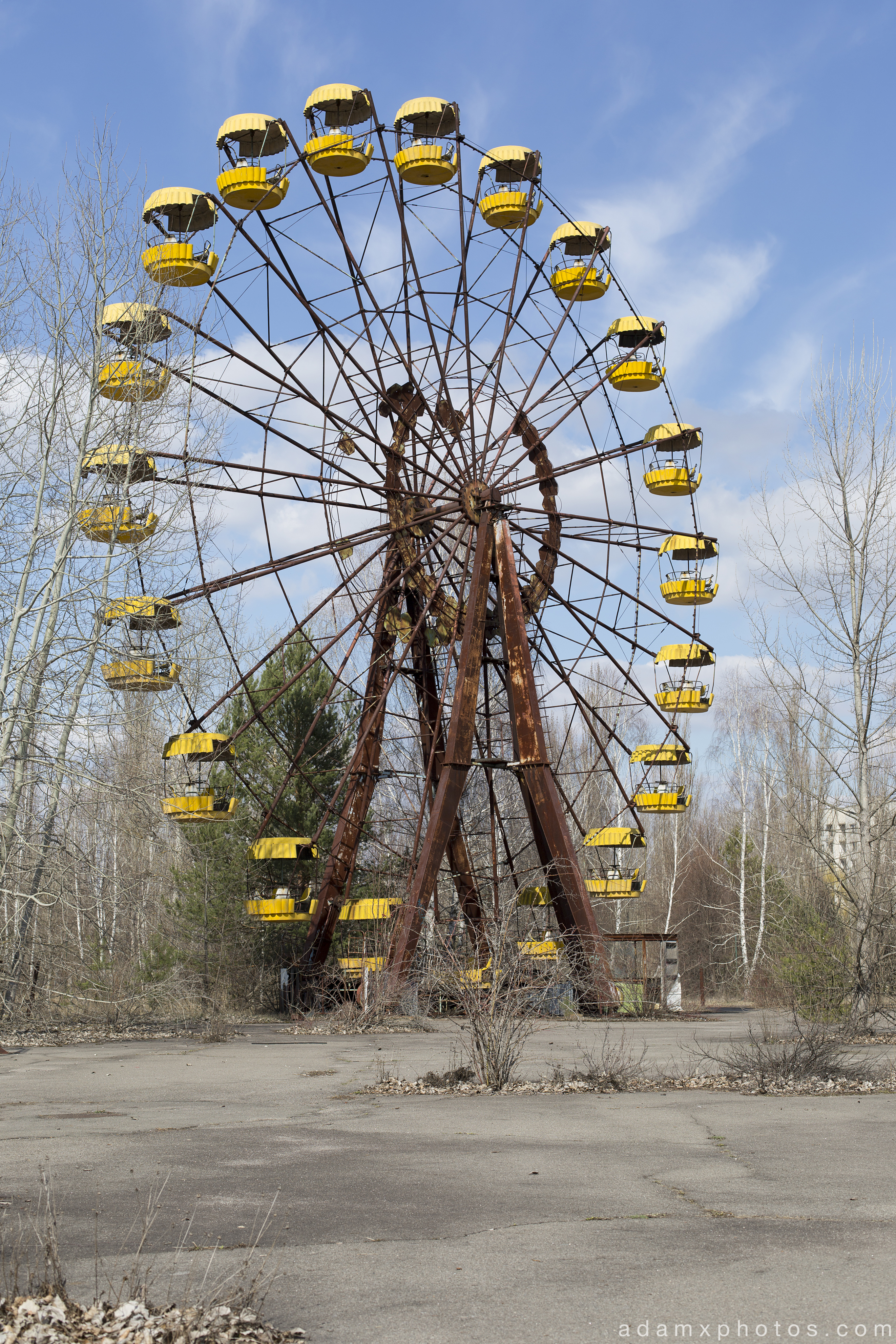

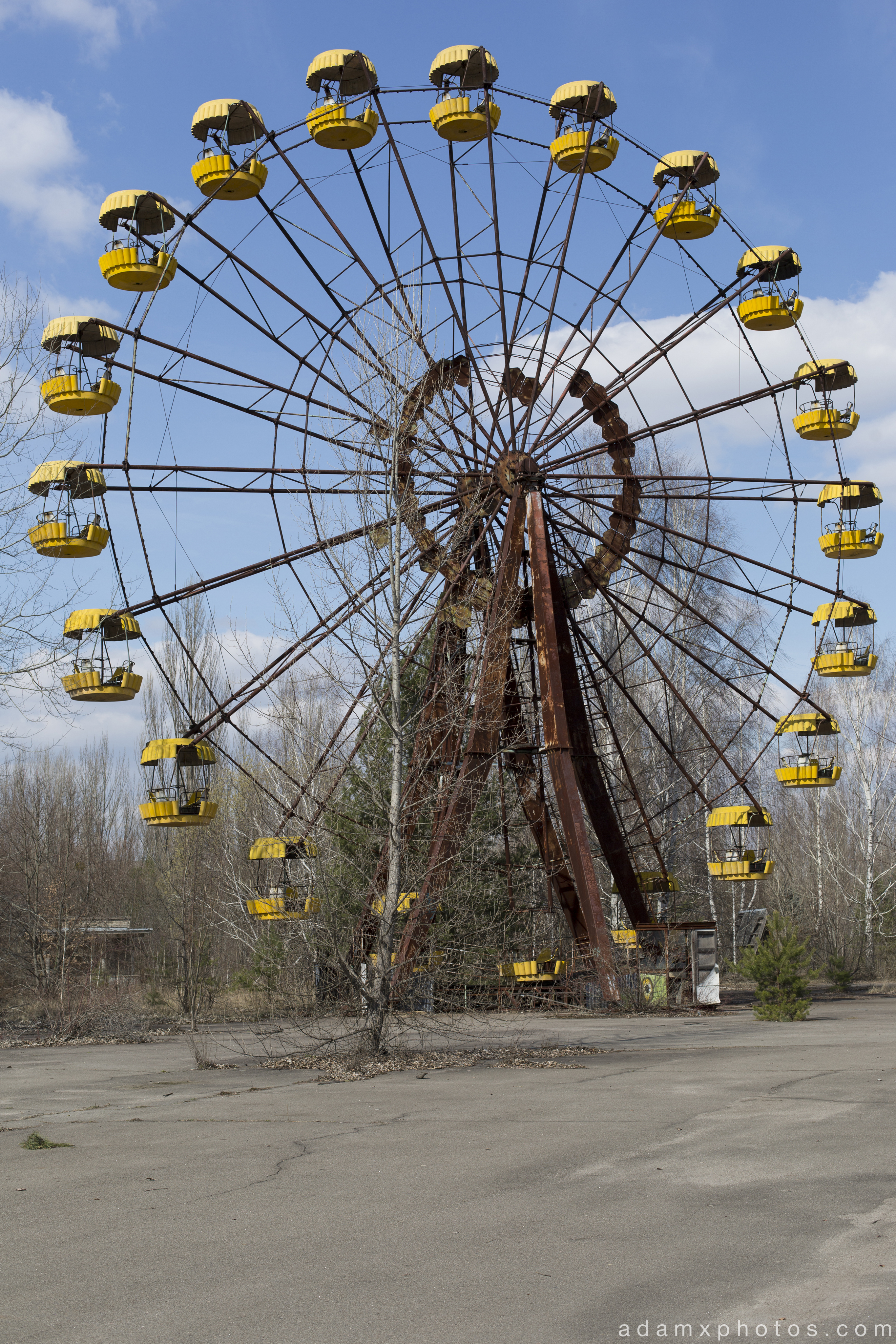

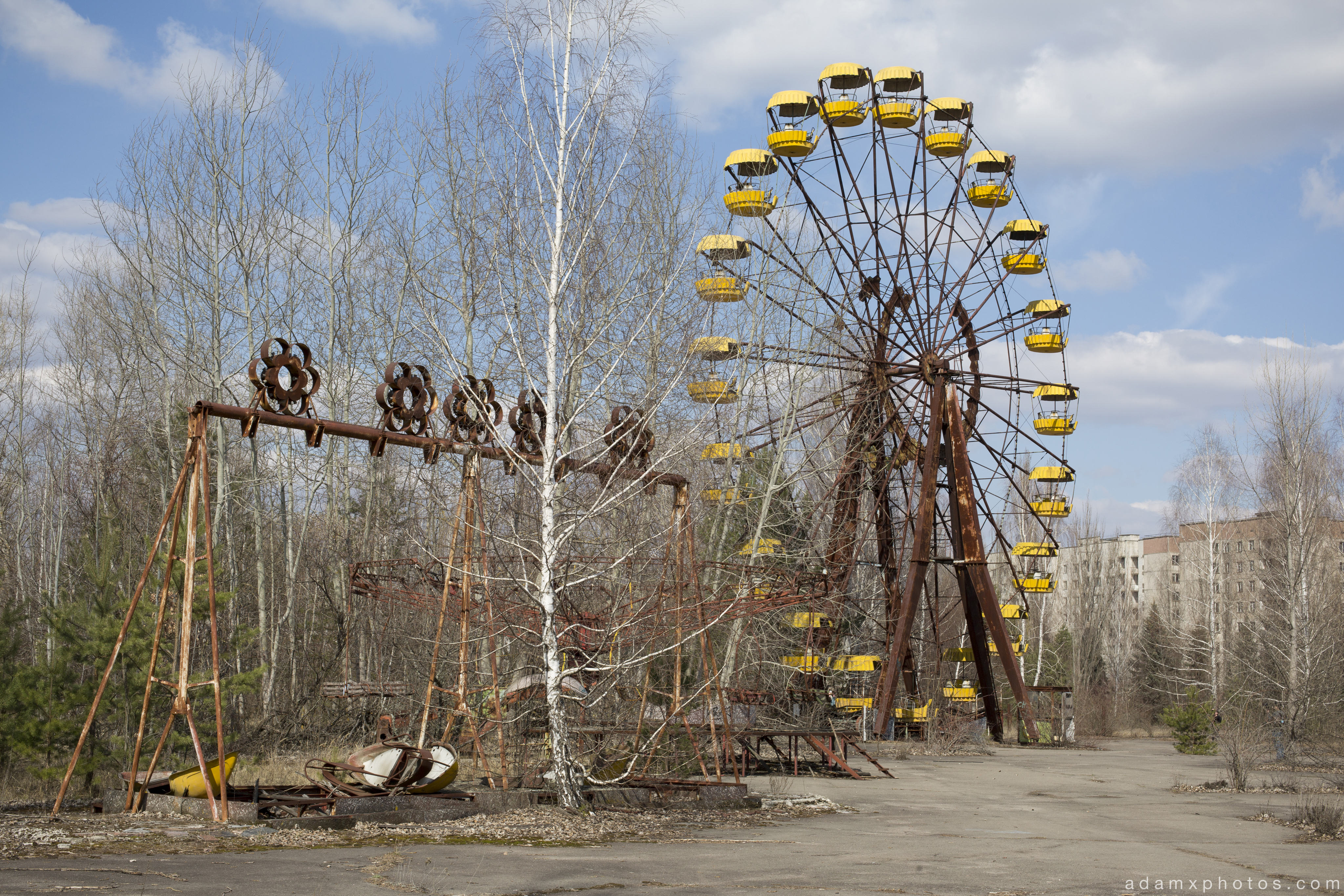
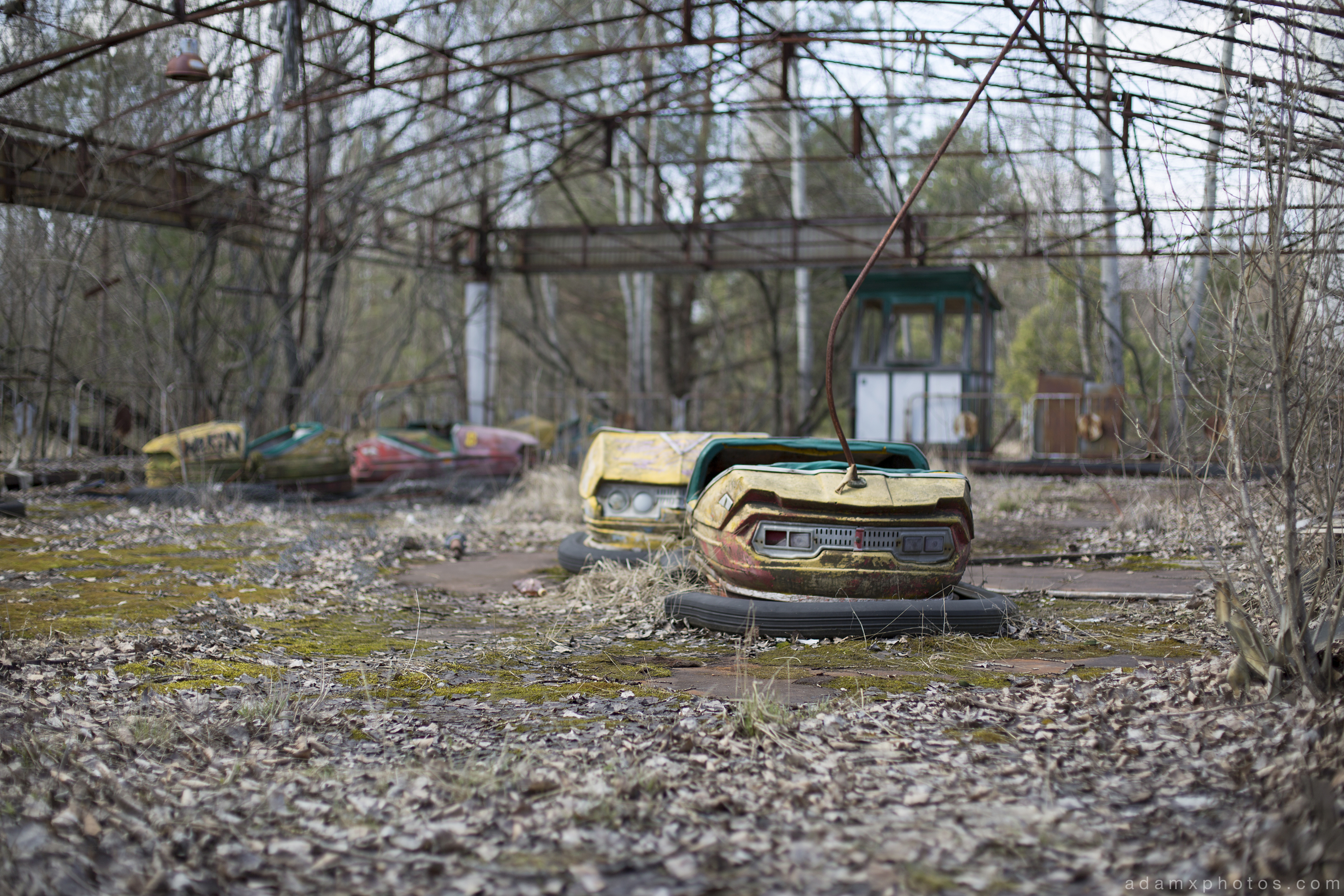
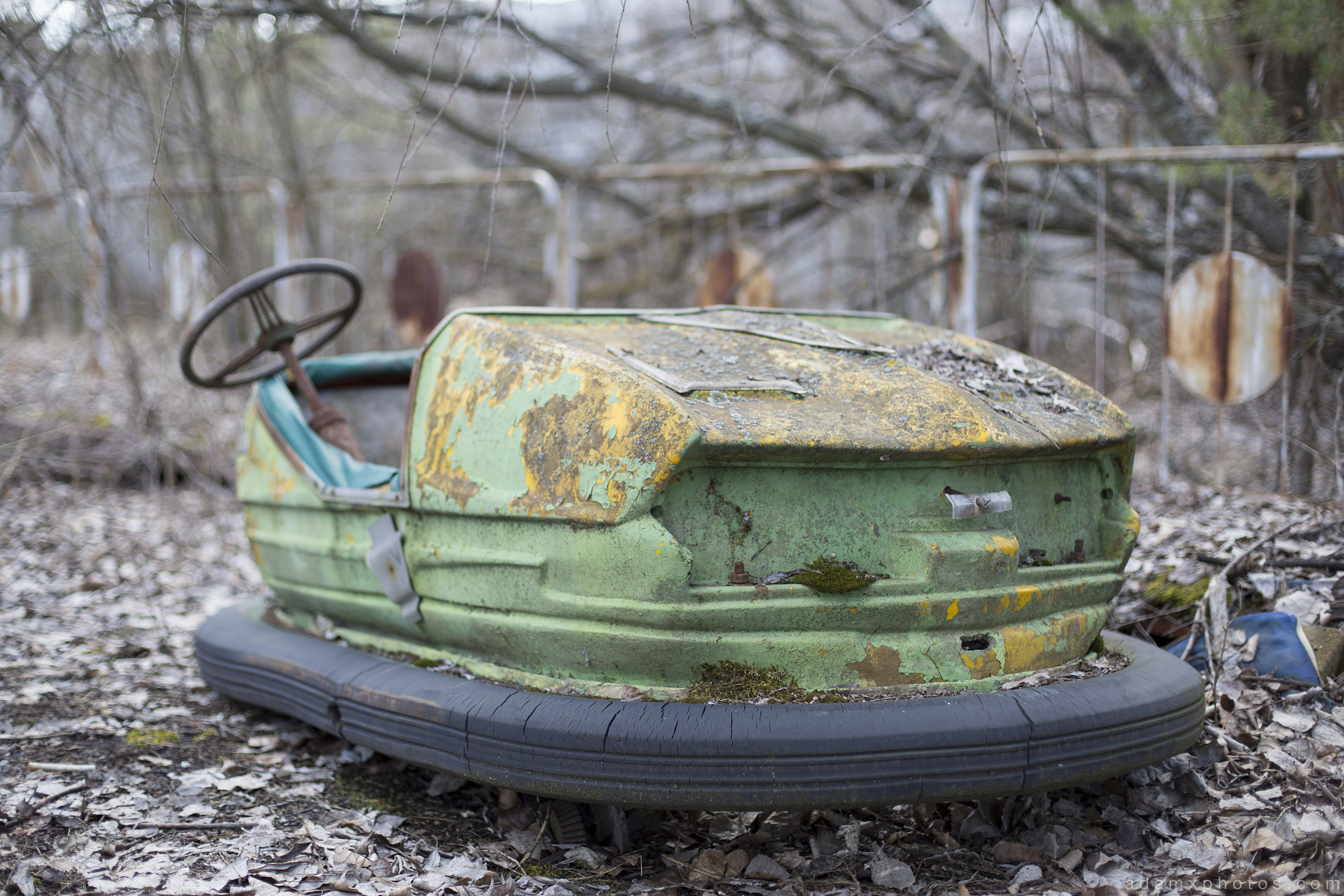
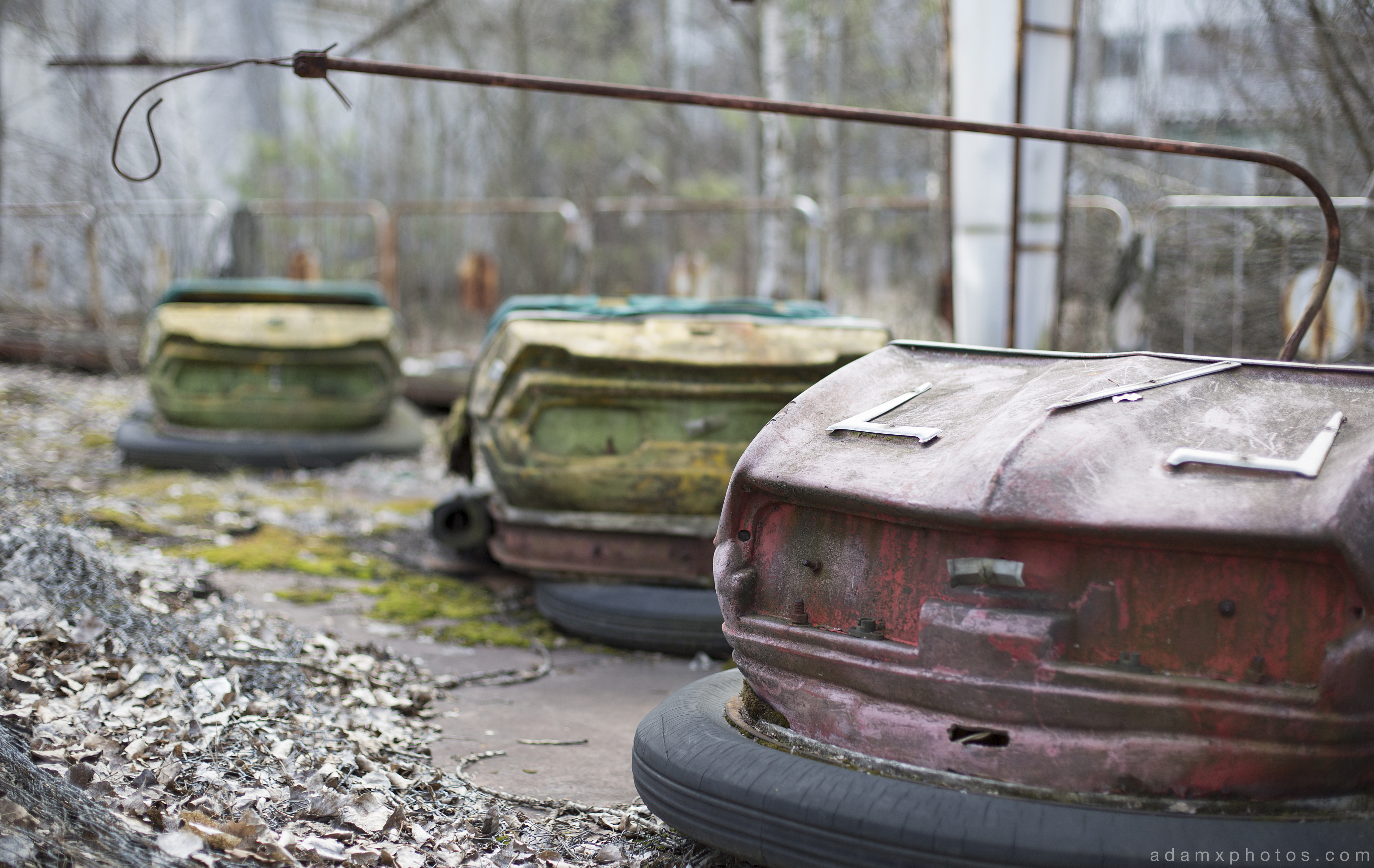


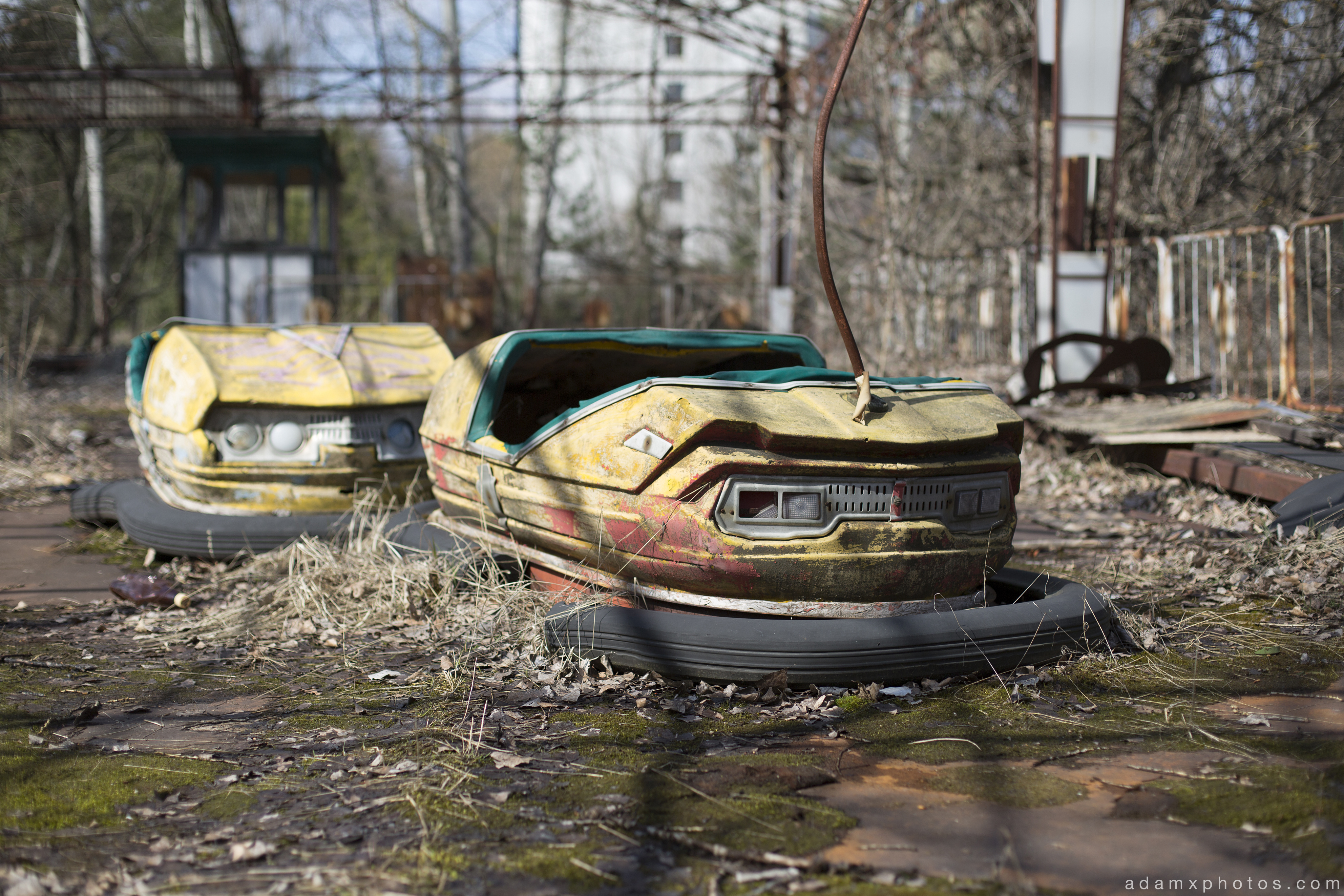
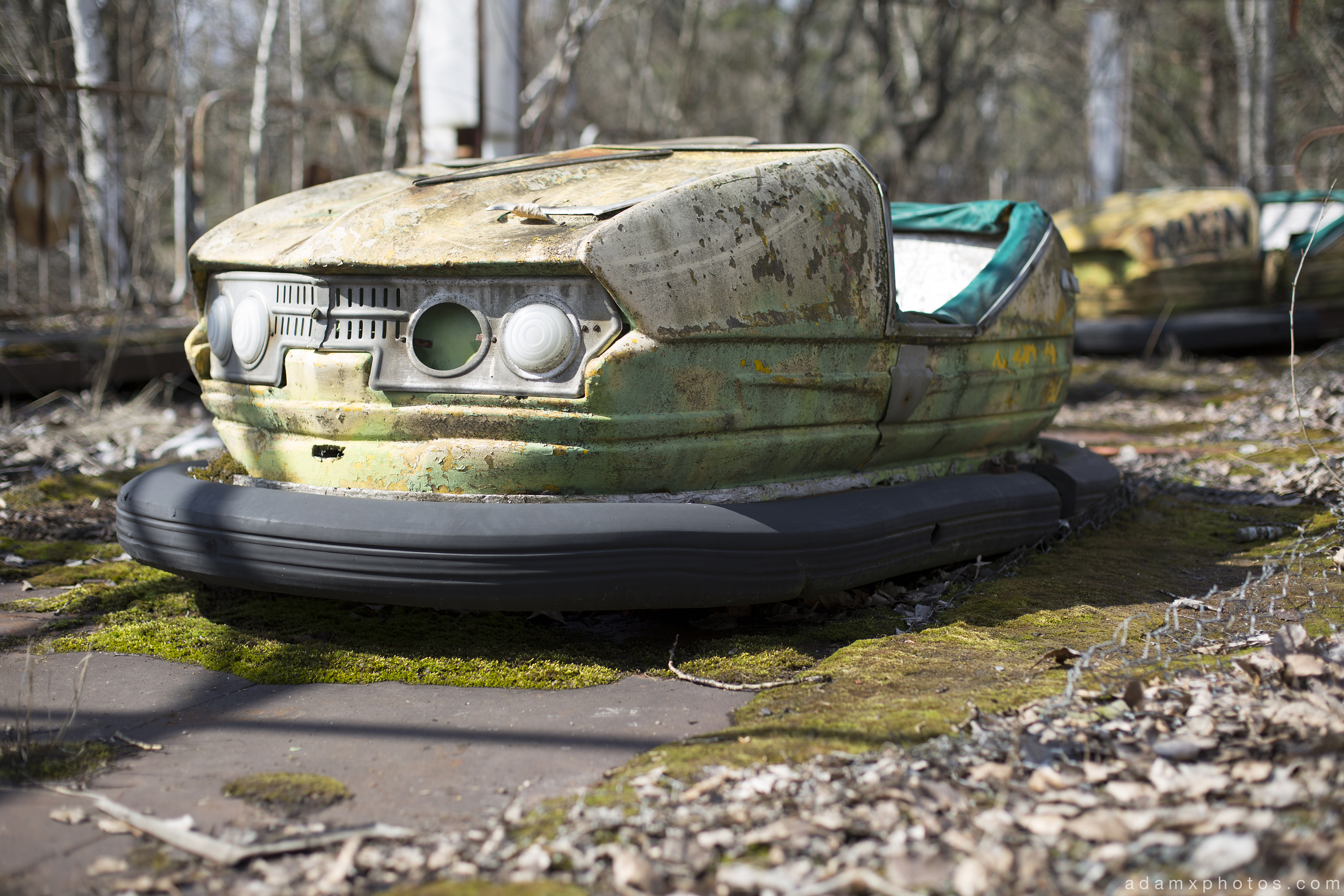

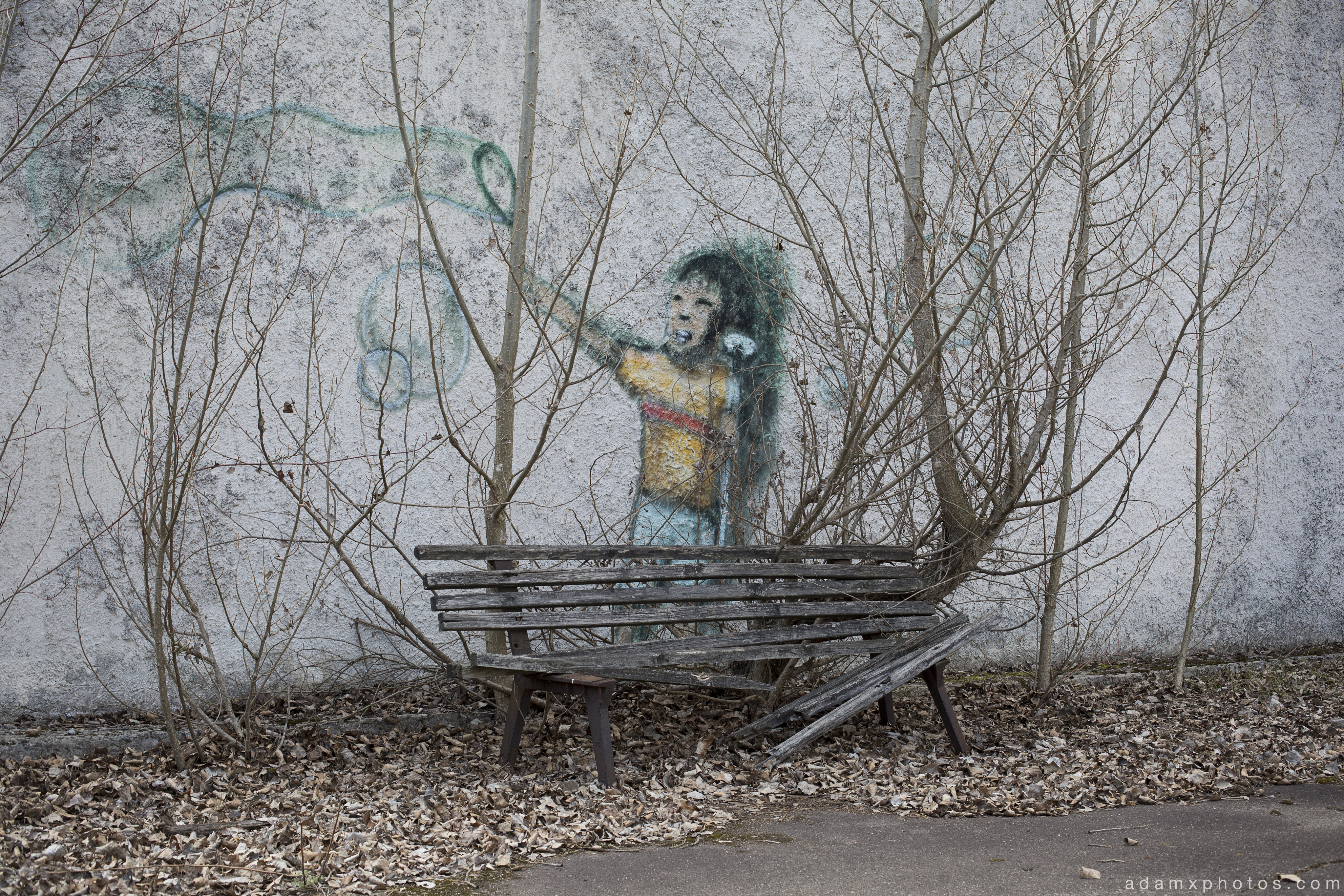
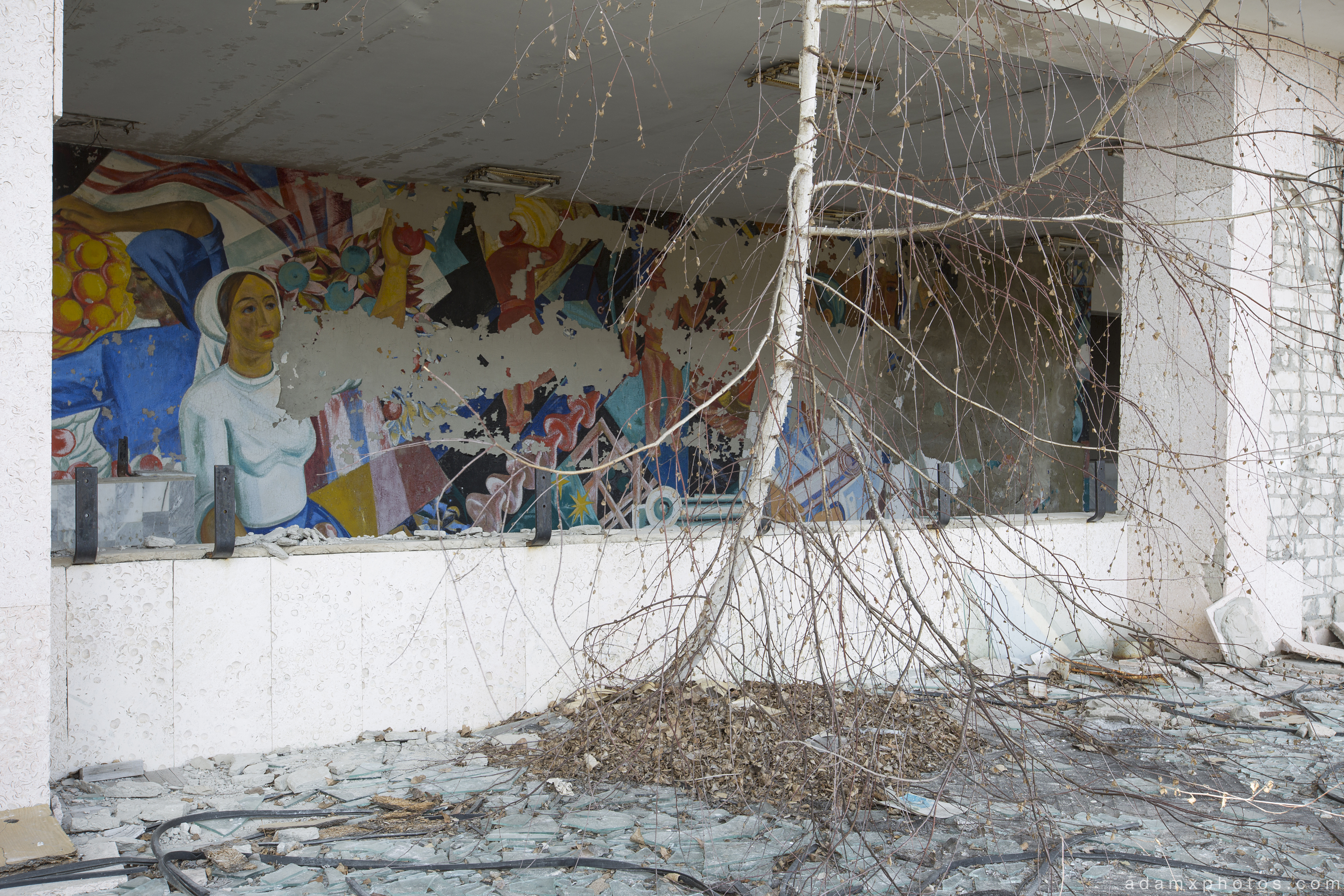

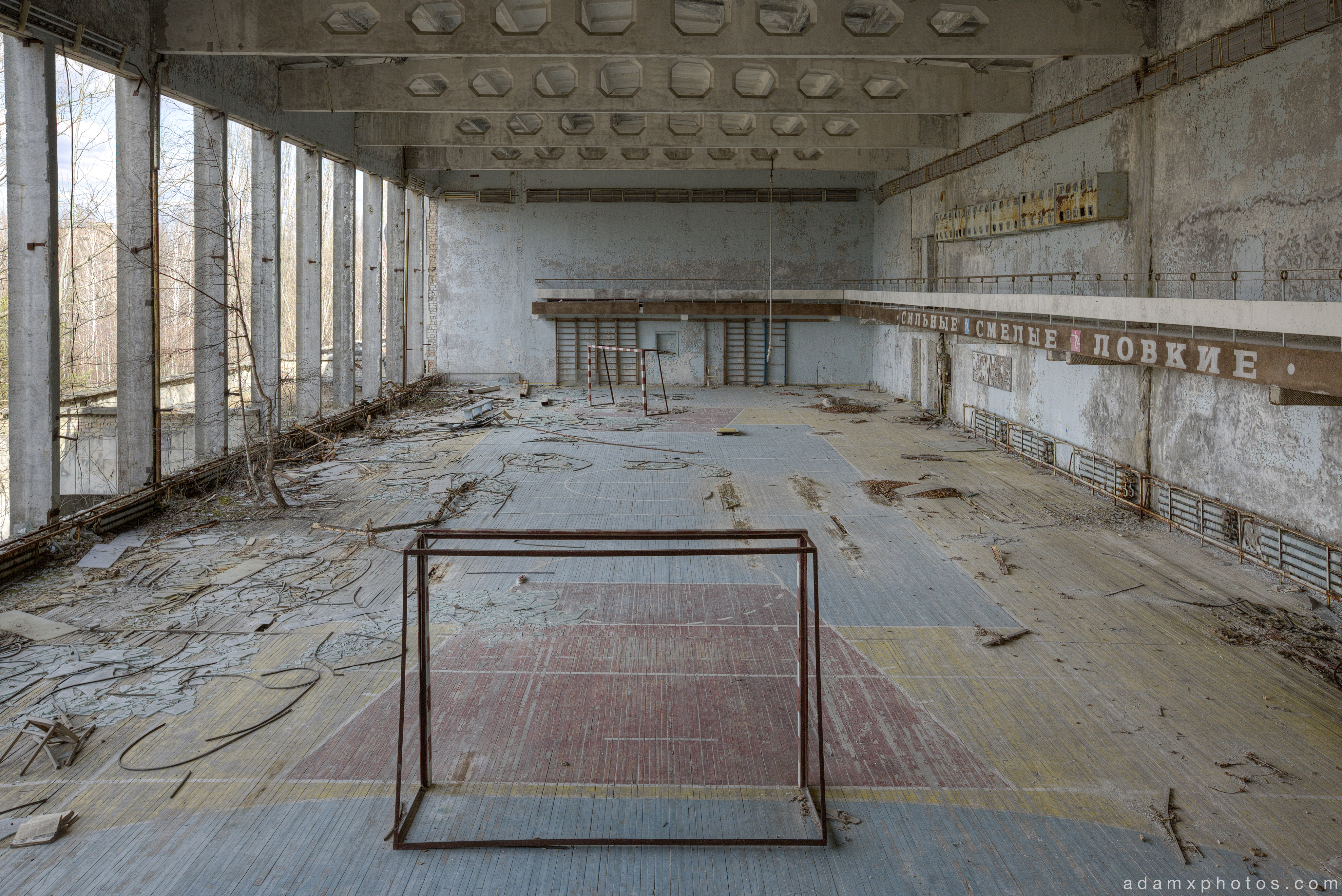
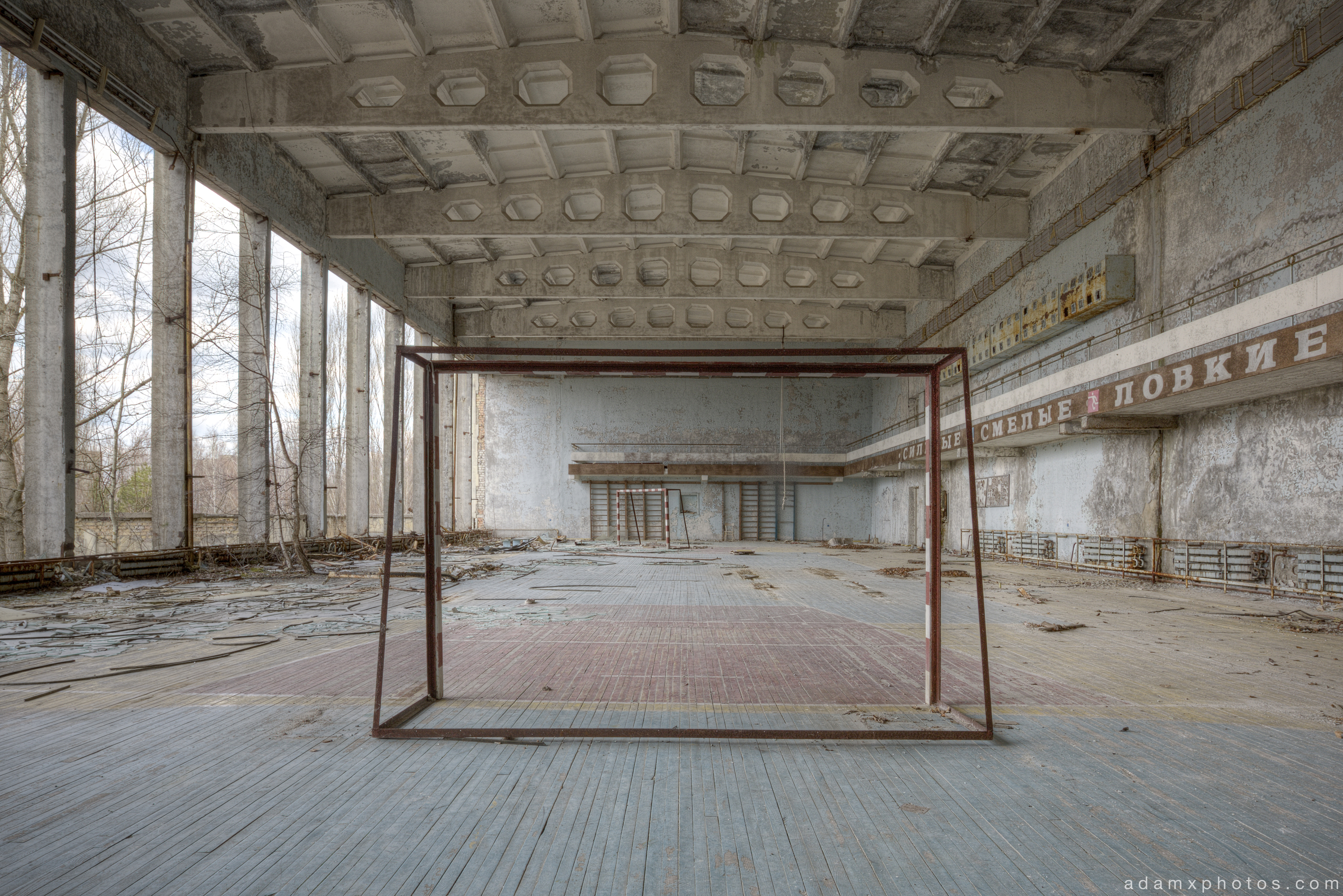
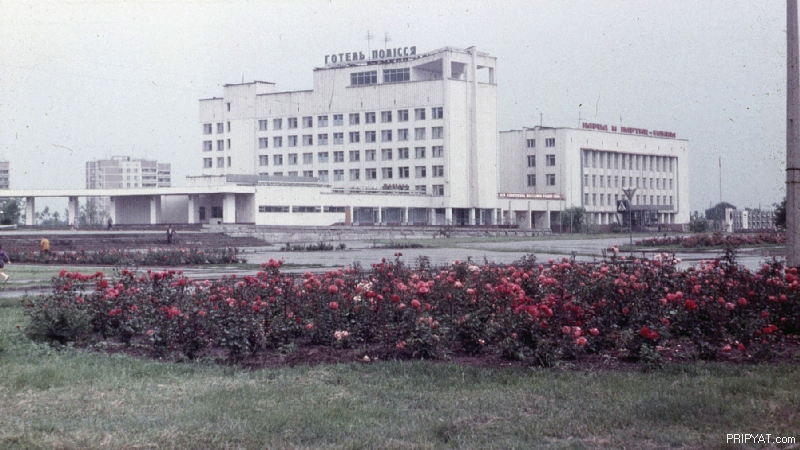

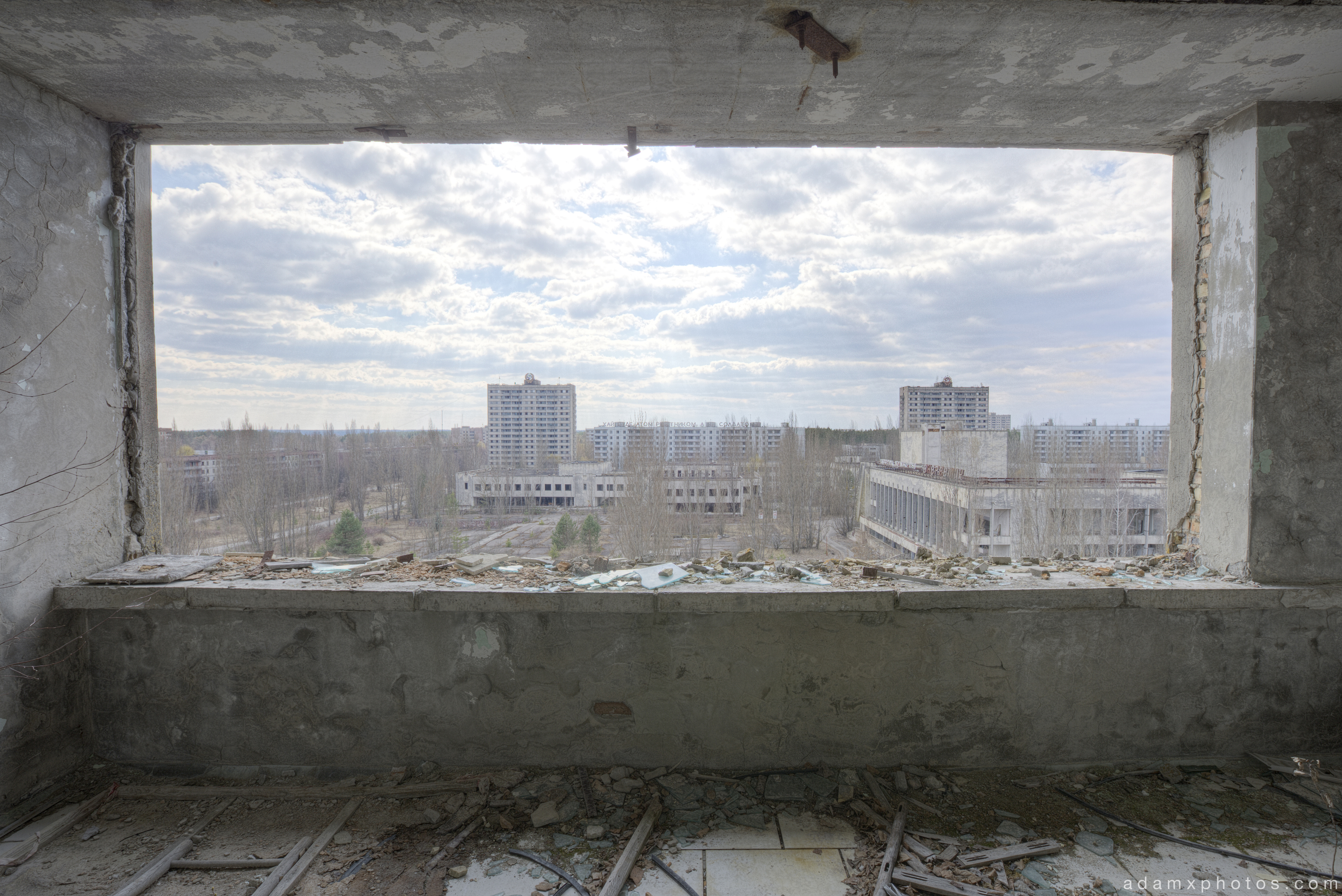

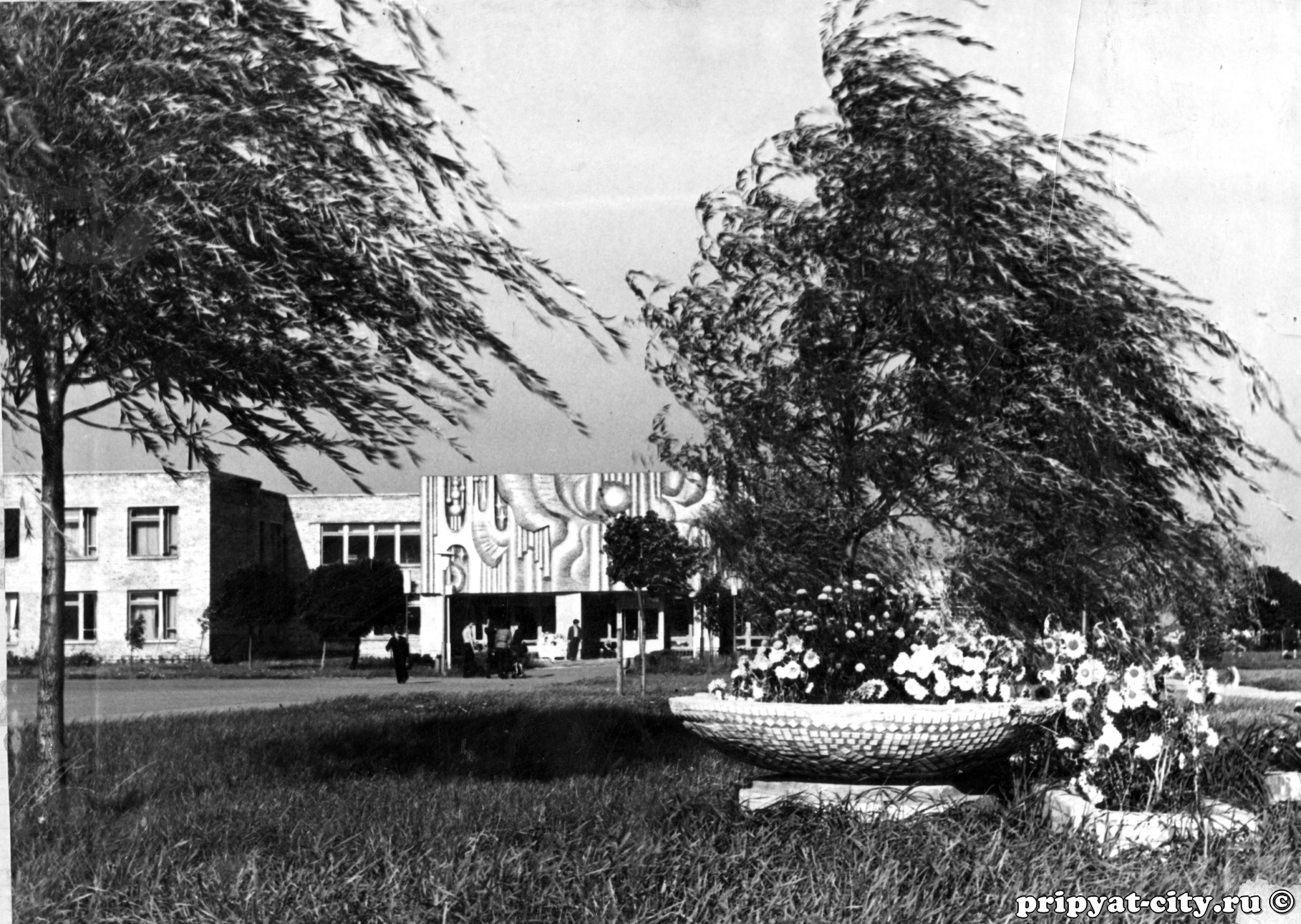
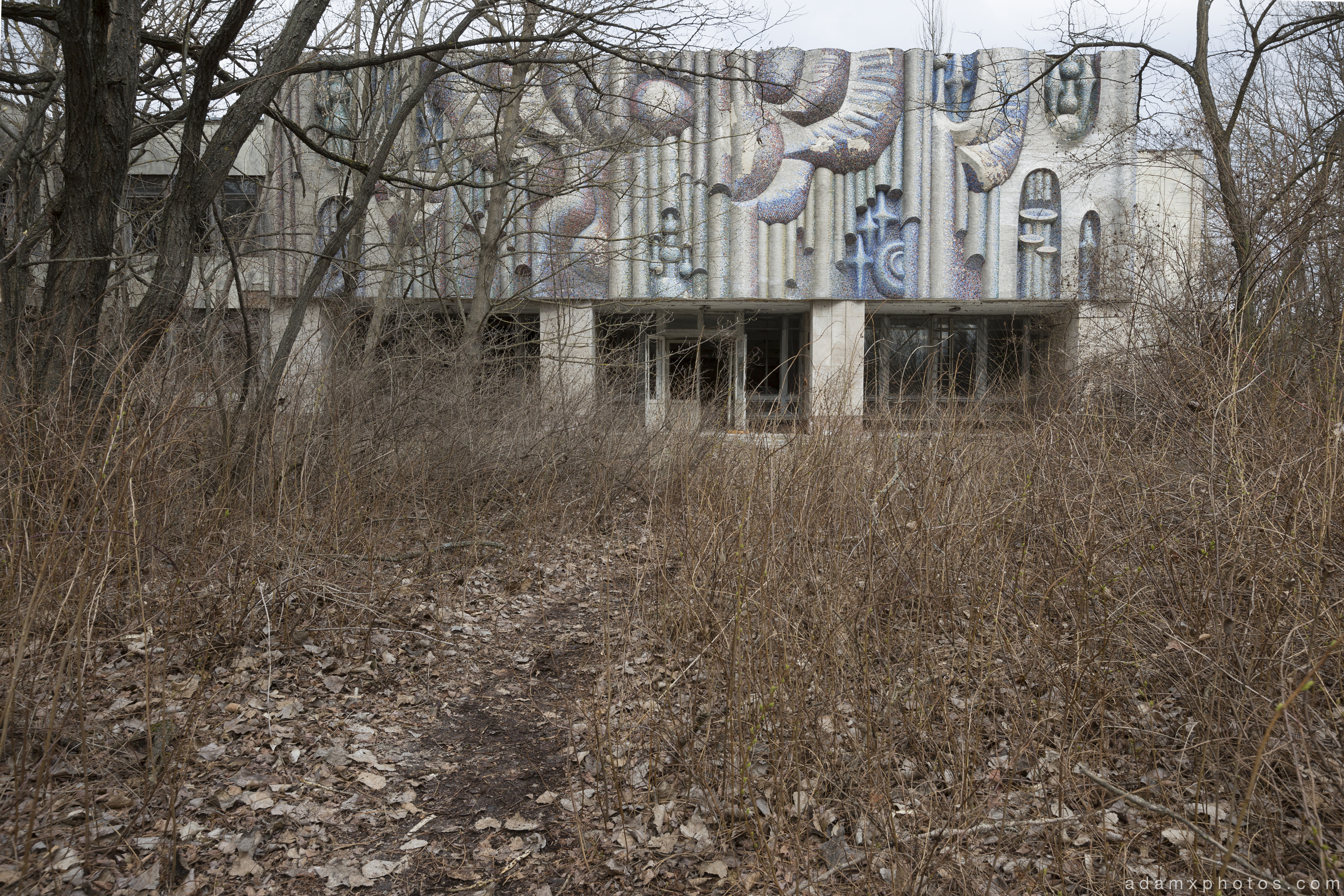
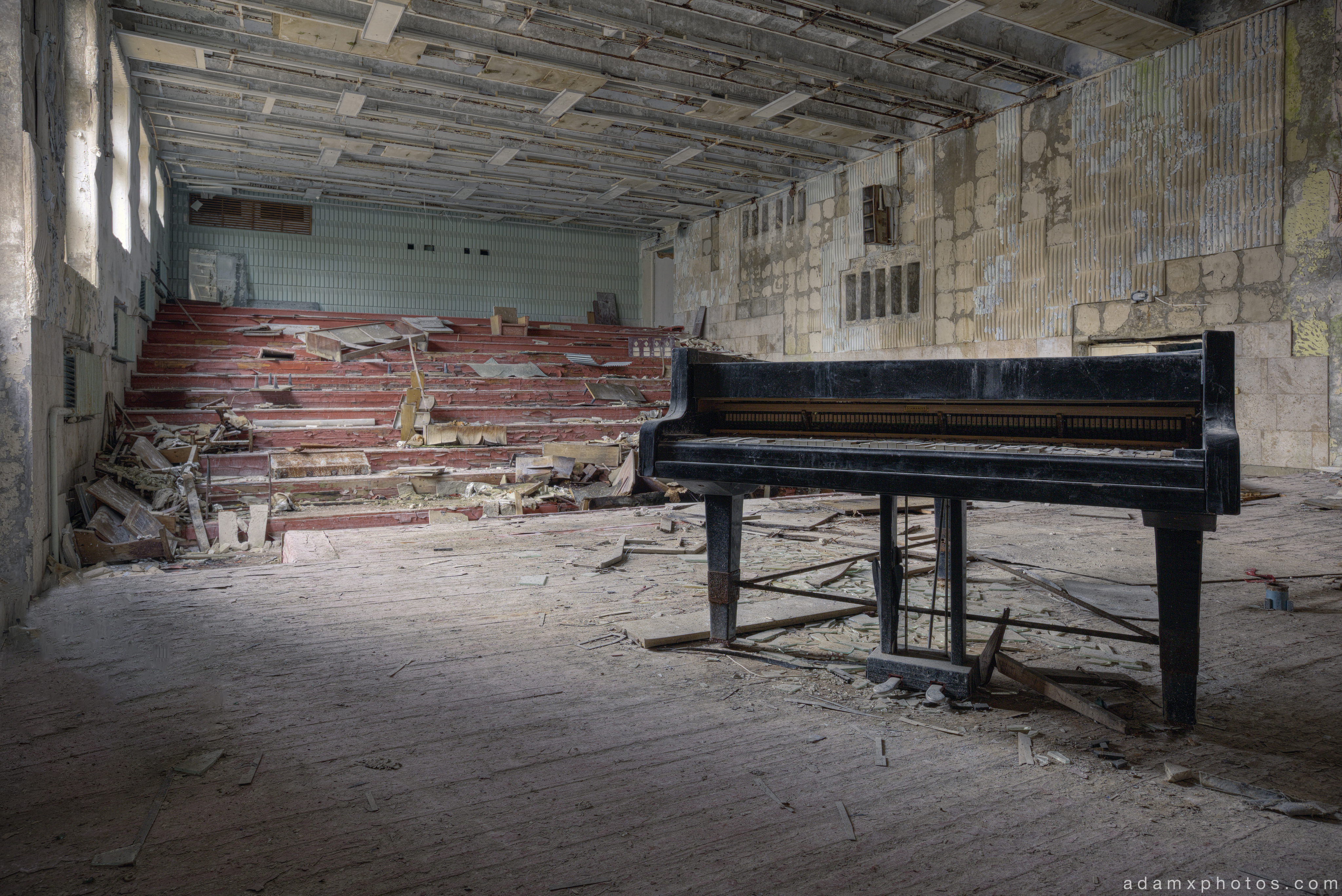
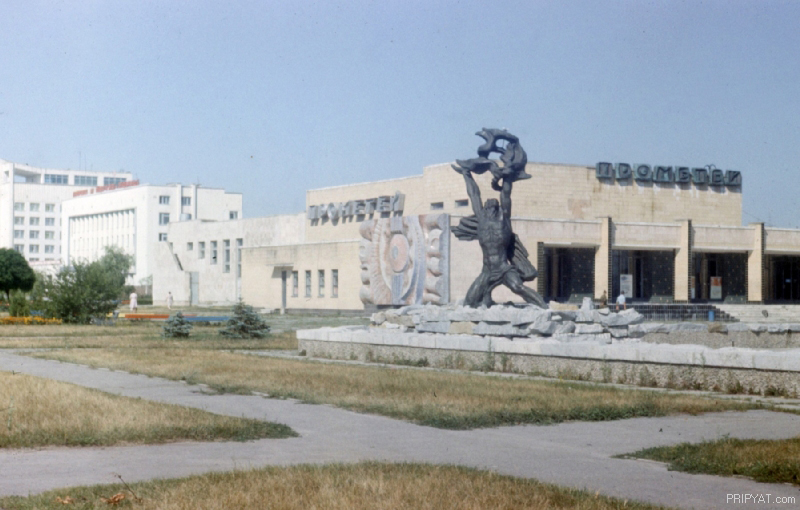
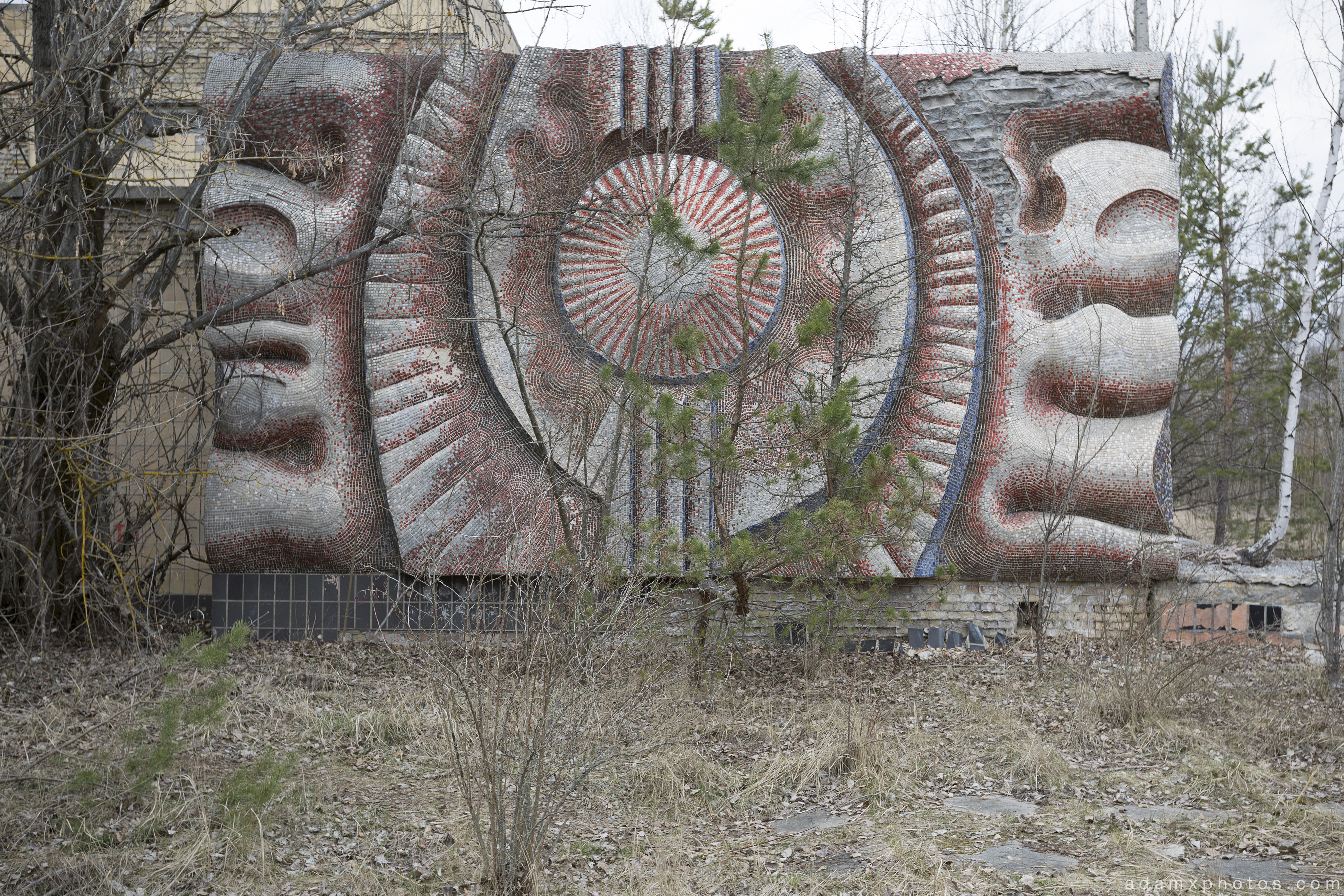
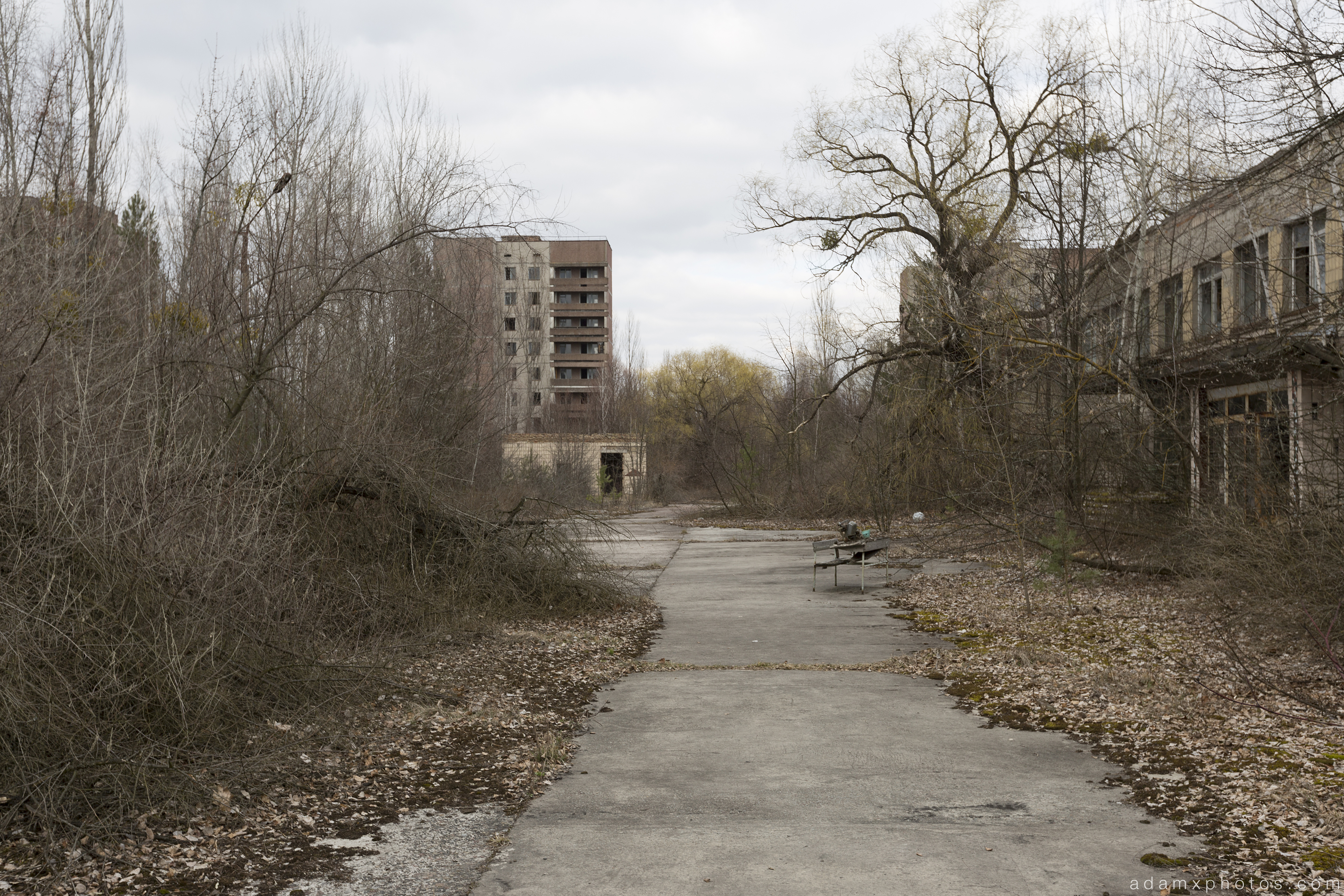
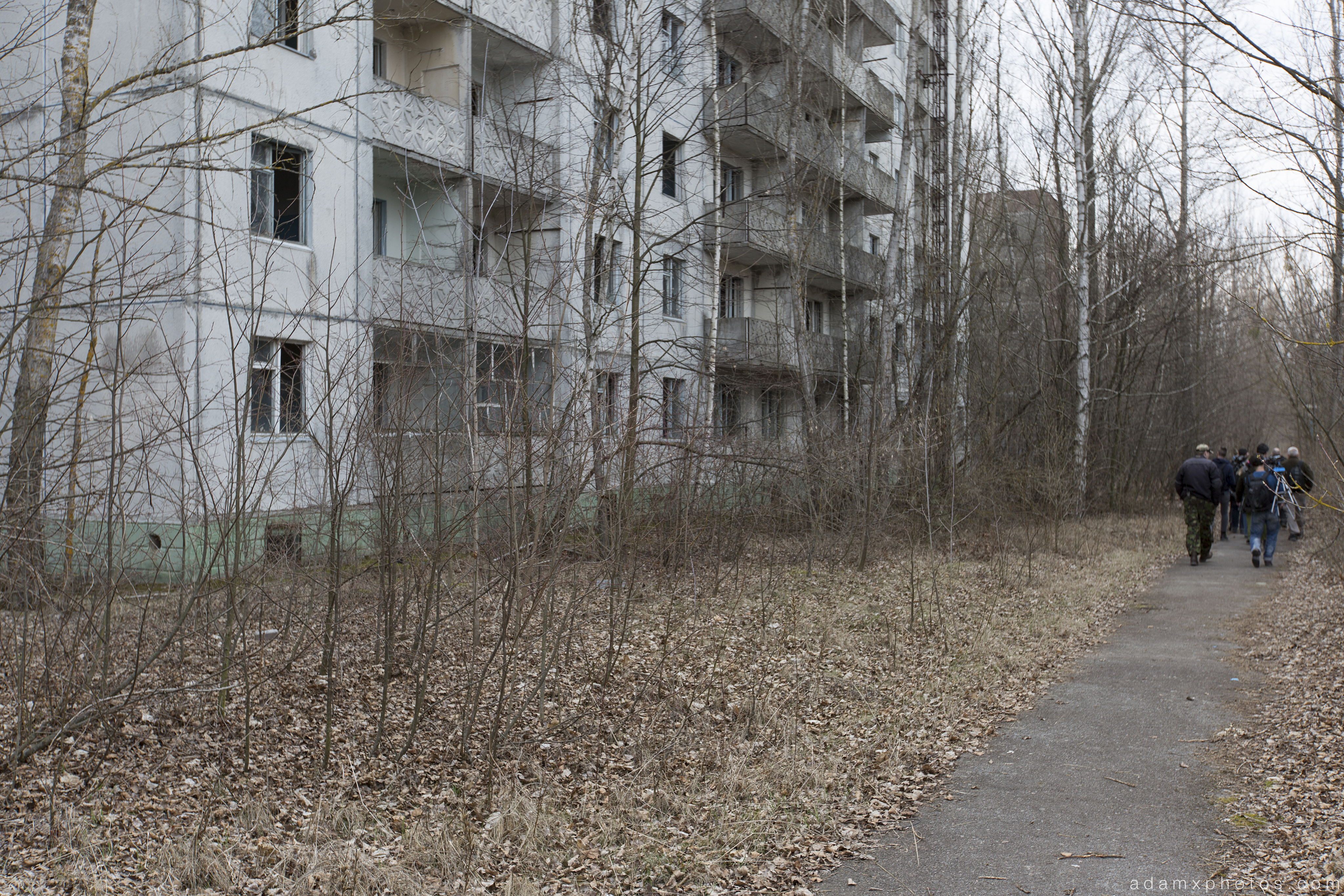


4 comments